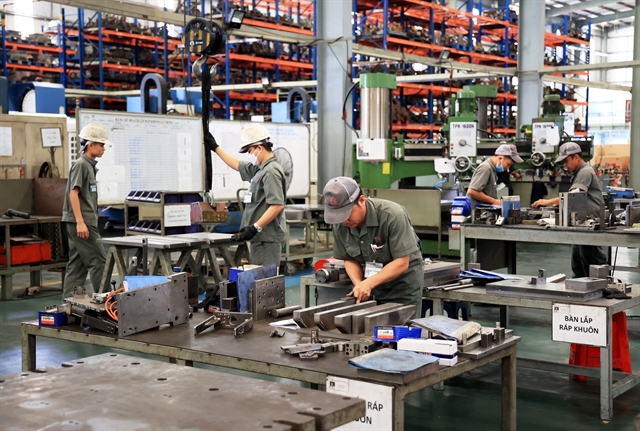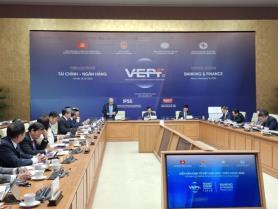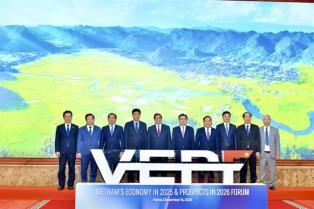Experts say merging provincial and communal administrative units has created new economic opportunities, allowing localities to combine strengths in terrain, infrastructure, and key industries.

The implementation of the two-tier local government model in 34 provinces and cities from July 1, 2025 is not merely a change in administrative scale but also sets out urgent requirements to restructure economic development strategies, harness newly formed potential from merged territories and strengthen regional linkages more effectively.
According to experts, the merger [of 63 provinces and cities previously into 34 provinces and cities nowadays] has opened up a diverse economic development space, enabling many localities to combine complementary advantages in topography, infrastructure and core economic sectors.
A prime example is the new Quảng Ngãi Province, a merger of Quảng Ngãi and Kon Tum, which now covers nearly 15,000 square kilometres and is home to over 2.1 million people. It connects the distinctive Sa Huỳnh coastline with the vast Central Highlands forests.
The province aims to make tourism a pillar of its economy by leveraging the Lý Sơn Măng Đen corridor, linking 129 kilometres of coastline with temperate highlands, and establishing eco-cities, resorts and cultural experience hubs.
Similarly, the new Đồng Nai Province, which includes formerly Bình Phước, now covering over 12,700 square kilometres and with a large population and abundant workforce, has set an ambitious target of 10 per cent GRDP growth in 2025.
The province has prioritised public investment disbursement, administrative reform and strong mobilisation of resources to sustain high growth momentum. In the first half of this year, Đồng Nai recorded economic growth of about 8.23 per cent, ranking 13th among all provinces and cities nationwide.
“After the merger, the new Đồng Nai remains steadfast in the goal of 10 per cent economic growth in 2025. To achieve this, departments, sectors, local authorities, enterprises and residents must join hands and make concerted efforts,” Võ Tấn Đức, chairman of the Đồng Nai People’s Committee [Administration], said.
“Đồng Nai will focus on key tasks such as public investment disbursement, mobilising all resources for development, removing project bottlenecks, accelerating investment promotion, and strengthening administrative reform and digital transformation.”
With 52 industrial parks already established and operating, Đồng Nai continues to be a focal point for industrial development. In the first five months of this year alone, the province attracted over US$1.4 billion in foreign direct investment, maintaining its position among the top localities nationwide.
Nguyễn Thị Hoàng, vice chairwoman of the Đồng Nai People’s Committee, said: “In 2025, Đồng Nai aims for economic growth of 10 per cent or more. The province will develop new industrial parks to further attract investment in production and business, making significant contributions to economic development.”
For provinces and cities with superior economic standing, the mergers and reorganisation of administrative machinery are expected to be opportunities to accelerate the race to enhance national and regional competitiveness.

The 2025 Provincial Economic Position Index (PEPI) report, developed by Vietstats in collaboration with independent experts, shows that the newly enlarged Hồ Chí Minh City [merging with Bình Dương and Bà Rịa Vũng Tàu] continues to assert its role as the country’s economic locomotive, with a perfect score of 70 points.
Following next are Hải Phòng, Quảng Ninh, Hà Nội and Đồng Nai, forming a leading group of economic centres. These localities possess the most advanced logistics infrastructure, deep-water ports, international airports, comprehensive transport networks and strong FDI attraction capacity, acting as growth nuclei for their respective regions.
However, harnessing this development potential does not happen automatically. In reality, many provinces and cities, despite clear advantages, have yet to transform them into commensurate economic positions.
Khánh Hòa [which now includes Ninh Thuận] is a typical example: despite owning the deep-water Vân Phong Port, Cam Ranh International Airport, and its location as the centre of the South Central Coast, logistics remain fragmented, integration is lacking, and its role as an industrial–service hub is still undefined.
Similarly, Lạng Sơn, with major international border gates, still relies largely on traditional border trade and lacks high-value logistics services.
Conversely, some merged provinces such as Bắc Ninh [with Bắc Giang], Tây Ninh [with Long An], Thái Nguyên [with Bắc Cạn], and Phú Thọ [with Hòa Bình and Vĩnh Phúc] are emerging thanks to better connectivity with economic corridors and orientations towards modern industry and services.
Experts note that a locality with modest GRDP can still become a growth pole if it sits at the crossroads of regional value chains and receives compatible infrastructure investment.
As the two-tier local government model enters its initial operating phase, many businesses have expressed hope that administrative procedures will soon stabilise and be streamlined to reduce compliance costs and create a favourable environment to leverage new policy mechanisms.
In new HCM City, which is home to more than 270,000 businesses – over 30 per cent of all Vietnamese enterprises – the authorities have outlined a long-term planning vision reflecting this new mindset, striving to rank among the top 100 most liveable cities globally.
In the first half of 2025, the city’s GRDP growth was estimated at 7.49 per cent when factoring in the merger with Bình Dương and Bà Rịa–Vũng Tàu. However, to achieve the full-year growth target of 8.5 per cent, the city must sustain growth rates above 10 per cent in the remaining quarters, a significant challenge.
“The merger of HCM City, Bình Dương and Bà Rịa Vũng Tàu is not simply an administrative geographical adjustment. This is a strategic move to form an integrated mega-city with comprehensive economic capacity, aiming to become Việt Nam’s global city within Southeast Asia,” Trương Minh Huy Vũ, director of the HCM City Institute for Development Studies, said.
“The new HCM City requires an integrated master plan with strategic vision to guide multi-centre urban development, ensure continuity in public investment and socio-economic activities, and avoid fragmented planning.”
According to Vũ, three main growth pillars have been identified: high-tech industries and smart manufacturing, international financial and technological services, and the marine economy with deep-sea ports and modern logistics.
“These drivers must be supported by both physical and digital infrastructure to lay the foundation for green and digital economic growth,” Vũ added.
At the strategic level, experts emphasise that to fully unlock the benefits of the new development space, provinces must clearly define investment priorities, focus on high value-added sectors, establish robust regional coordination mechanisms and upgrade connectivity infrastructure.
Meticulous planning, improving human capital quality and accelerating digital transformation will be decisive in turning potential into real competitive strength. VNS





